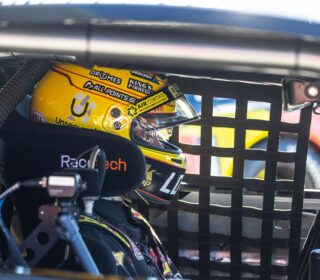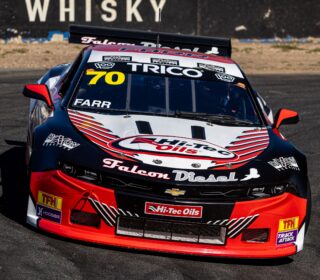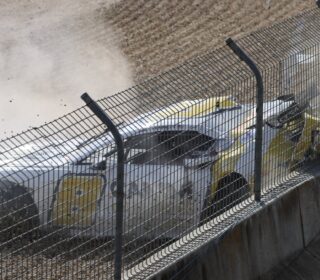COMMENT: BRAKE DUCTS? BREAKING ME!
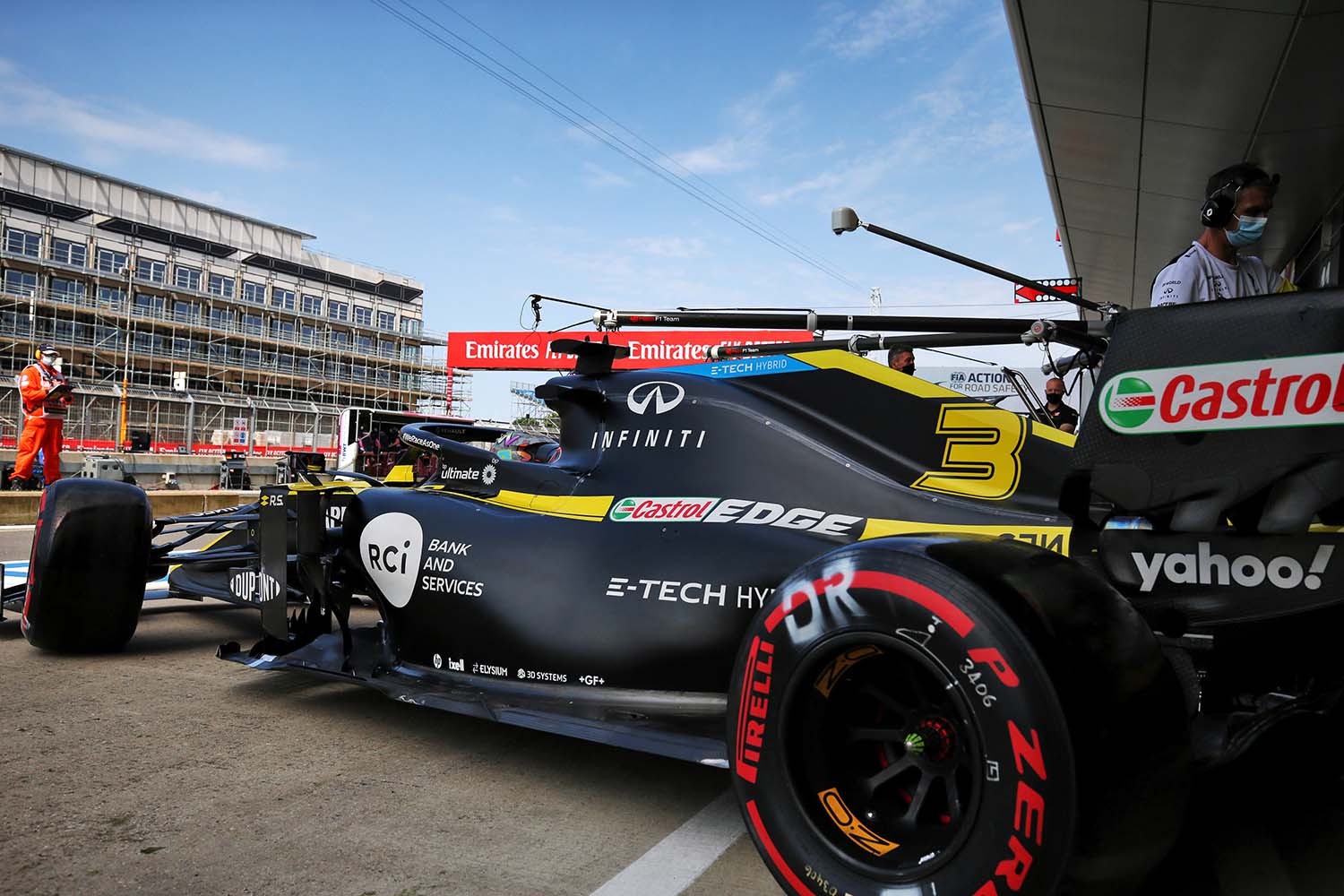
AT A TIME when Formula One needs to be doing everything it can to put on a great show, the debate surrounding brake ducts exposes everything that still needs fixing in motorsport’s biggest show..
WORDS: Richard Craill IMAGES: Renault Sport Media
TELL ME, and be honest now, how much you care about the brake ducts on a modern Formula One car.
I’ve followed F1 for 30 years and loved discussing things like the 1995 introduction of higher cockpit sides following Senna’s death and Mika Hakkinen’s Adelaide accident, changes that completely changed the shape of the cars.
I vacillated over the various engine changes from V12s to V10s and the screaming V8’s. I argued with friends whether Williams’ Renault V10 was better than Benneton’s Ford V8 in 1994.
I liked pouring over the details of the shift to the high-nose era of the mid 1990s and the switch from slick tyres to grooved and back. I love nothing more than a top-10 list of the best looking F1 cars of all time. And on it goes.
Therefore I feel like I am, what most would define, a reasonably well informed and interested fan of such things in Grand Prix Racing.
But brake ducts? Negative. Nope. Could not care less.
That a small, relatively benign carbon fibre component could such shape the narrative of the sport in the past few weeks, putting even the issues around race and Coronavirus on the back burner, is an indictment on everything currently awry with the biggest show in motorsport.
It is very, very cliché F1 and for the love of everything motorsport, it has to stop – especially if the sport is ever to move forward to the much-heralded new era so vaunted by Ross Brawn & co in 2022.
Of course, the real issue surrounding the current dramas with Racing Point versus almost everyone else isn’t so much about the brake ducts themselves, rather the philosophy that saw the Silverstone-based team basically copy and paste last year’s Mercedes AMG F1 car to design their 2020 pink rocket.
They claim it’s within the rules and the brake ducts were part of the listed parts provided by Mercedes F1 in their deal with the team, while others, led by Renault, say they’re blending the definition of what it means to be a constructor.
Whatever. I don’t care. I am literally more interested in watching the recently applied paint to my outdoor area dry than I am discussing brake ducts on F1 cars.
What I do care about, however, is there being hard, competitive racing and a group of cars heading into every race with a chance to at least get on the podium, if not win.
Right now it’s Mercedes miles in front, Red Bull capable with one car if it’s hot and the rest fighting out an immense mid-pack fight.
A mid-pack fight, by the way, that is a prime example of what the entire Formula 1 field should be like; a bunch of good teams, evenly matched and having a big crack with whoever executes best on the day or in the conditions coming out on top.
Imagine if that midfield fight was for the race lead! It would be remarkable.
Now I consider myself an F1 traditionalist and I love the concept of the best team and best driver winning in any given season and everyone building their own things to achieve that. It’s the way it has always been and I don’t want that to change too much.
But as I have grown older and hopefully (though some would disagree) wiser, the more I watch F1 the more I want a series where more often than not, there are multiple potential winners on any given day. The last time F1 truly delivered that was probably the epic 2010 season, though I could be wrong.
The point of all this is that in the last week F1 as an industry teams has made the brake ducts the hill on which they are going to die on, and in doing so have completely missed the point.
It shouldn’t be about that and more about producing a sporting product that delivers a more open playing field and better racing.
If one team using another brake ducts makes for more competitive racing, then for crying out loud, let them have it.
The technical anoraks love the discussion and hardcore F1 fans froth over such details, but if the usual 150,000 spectators were at Silverstone at the weekend, how many of them do you think would have really cared if Racing Point pinched Mercedes-AMG’s designs for a brake cooling device?
Yeah, I don’t think it would be many either.
If F1 is going to charge into the bright, exciting, more competitive future that Ross Brawn has envisaged for 2022 and onward, ridding itself of ridiculous debates around components like brake ducts and focusing more on the actual sporting side of the competition must to be a priority.
SLOW DOWN?
BROADLY, Sunday night’s 70th anniversary Grand Prix was really rather good.
The Red Bull came alive in the hot conditions as the Mercedes struggled so for the first time this year we had a true challenge to the Silver.. err.. black Arrows at the front of the field. That was good.
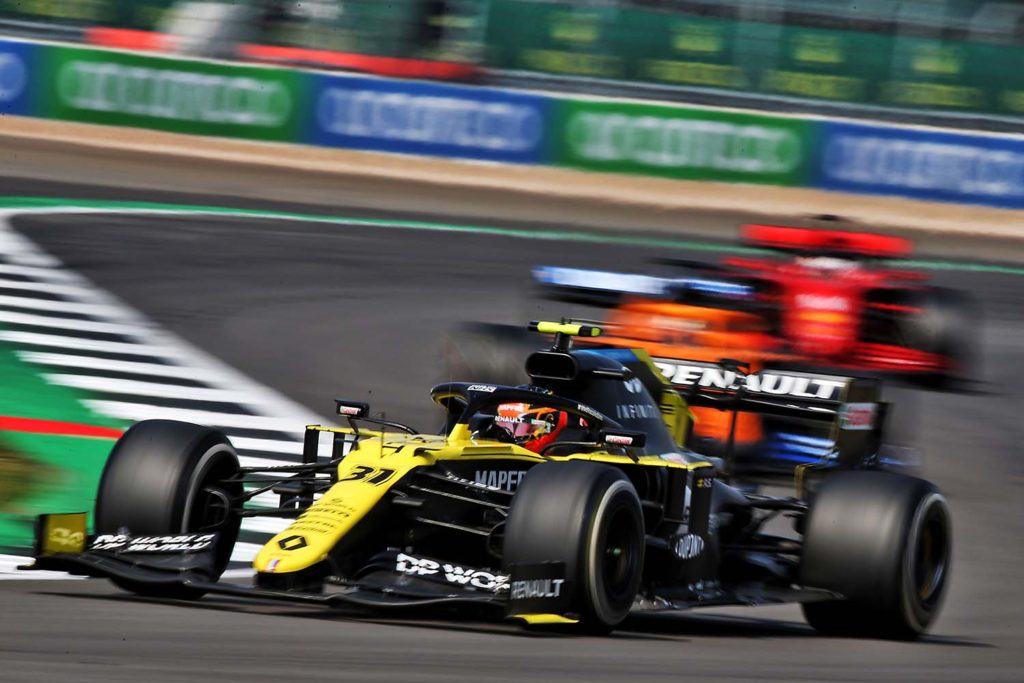
The midfield battle has been a highlight of the season and the scrapping between Racing Point, McLaren, Renault and Alpha Tauri has saved this season from the Merc rout, while I’d watch Alex Albon carving up Kimi Raikkonen on the outside of Copse any day of the week.
What’s more, Charles Le Clerc has enhanced his reputation mightily by dragging that rubbish Ferrari much higher up the field than it deserves, only enhanced by Sebastien Vettel’s trip down struggle street.
So, a decent Grand Prix then and a few hours break from the political crap that F1 so often bogs itself down in when it should be working on the on-track product instead.
Another example of that slightly misguided F1 philosophy at the moment was Red Bull’s command to Max Verstappen asking him to back off from the Mercedes duo he was hunting prior to the first round of stops.
Earlier I wrote about F1 picking the ‘hill it was going to die on’. Mine would be this:
At no point in a motor race should a team tell a driver to not try and pass the car he or she is chasing.
Red Bull telling Verstappen to back off, for temperature or tyre concerns, was just another highlight that the 2022 rules reset can’t come soon enough.
The cars shouldn’t be so sensitive to temperature and following one second behind another that they need to slow down rather than attempt to overtake.
In my opinion, that is not what the best racing cars and best racing drivers on the planet should be about.
It’s bad enough that in races the cars wobble around five or six seconds, and sometimes more, slower than they qualified. Telling them to not race should be tantamount to treason against the sport.
It’s proof that too much of the driving is being done from the pit wall and not by the organic component behind the wheel.
So, bravo to Verstappen for having the confidence – call it arrogance, whatever you like – in his own ability and his own car to continue to push and take the fight to the Mercedes duo. Thank god he did, because if he’d backed off it may have been a very different, less compelling, 70th anniversary GP.
Max has his detractors but his decision to keep pushing, and Red Bull’s willingness to back their driver, was exactly what F1 needed.
Lets hope future F1 has less driving from the Pit Wall and more from the drivers seat, like we saw on the weekend because in this instance, it completely changed the race and indeed, the season.
And even if you do not like Max Verstappen, I’ll argue ‘til I’m blue in the face that it changed it for the better.



